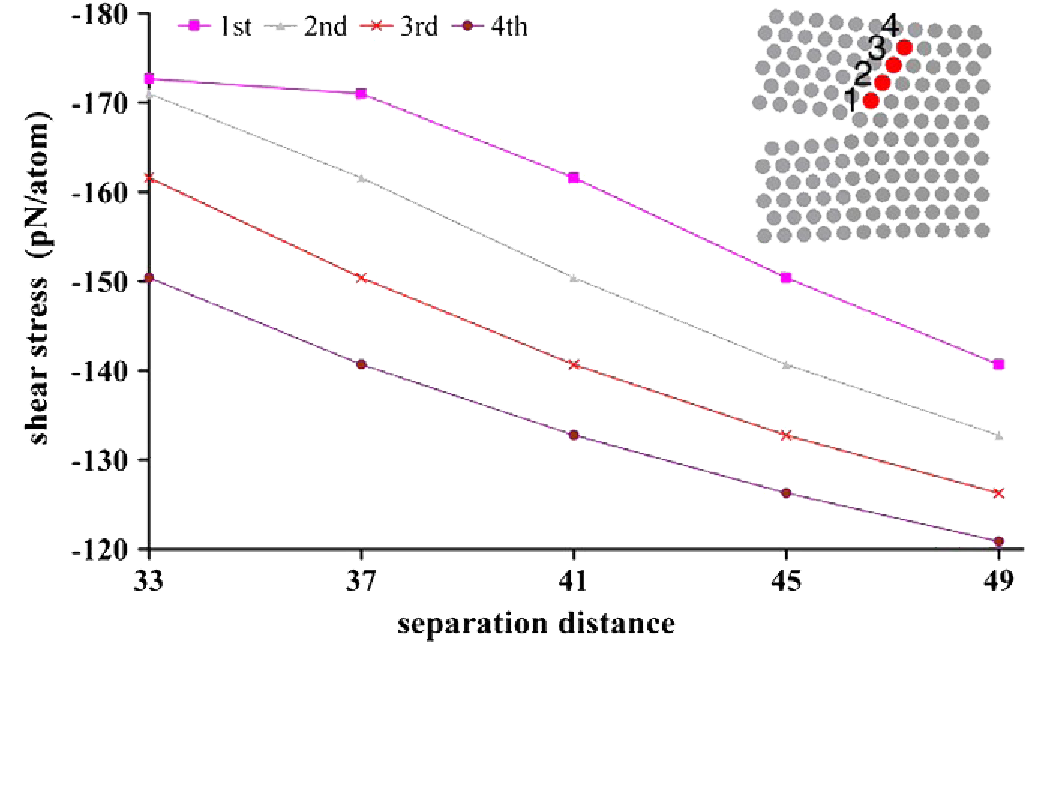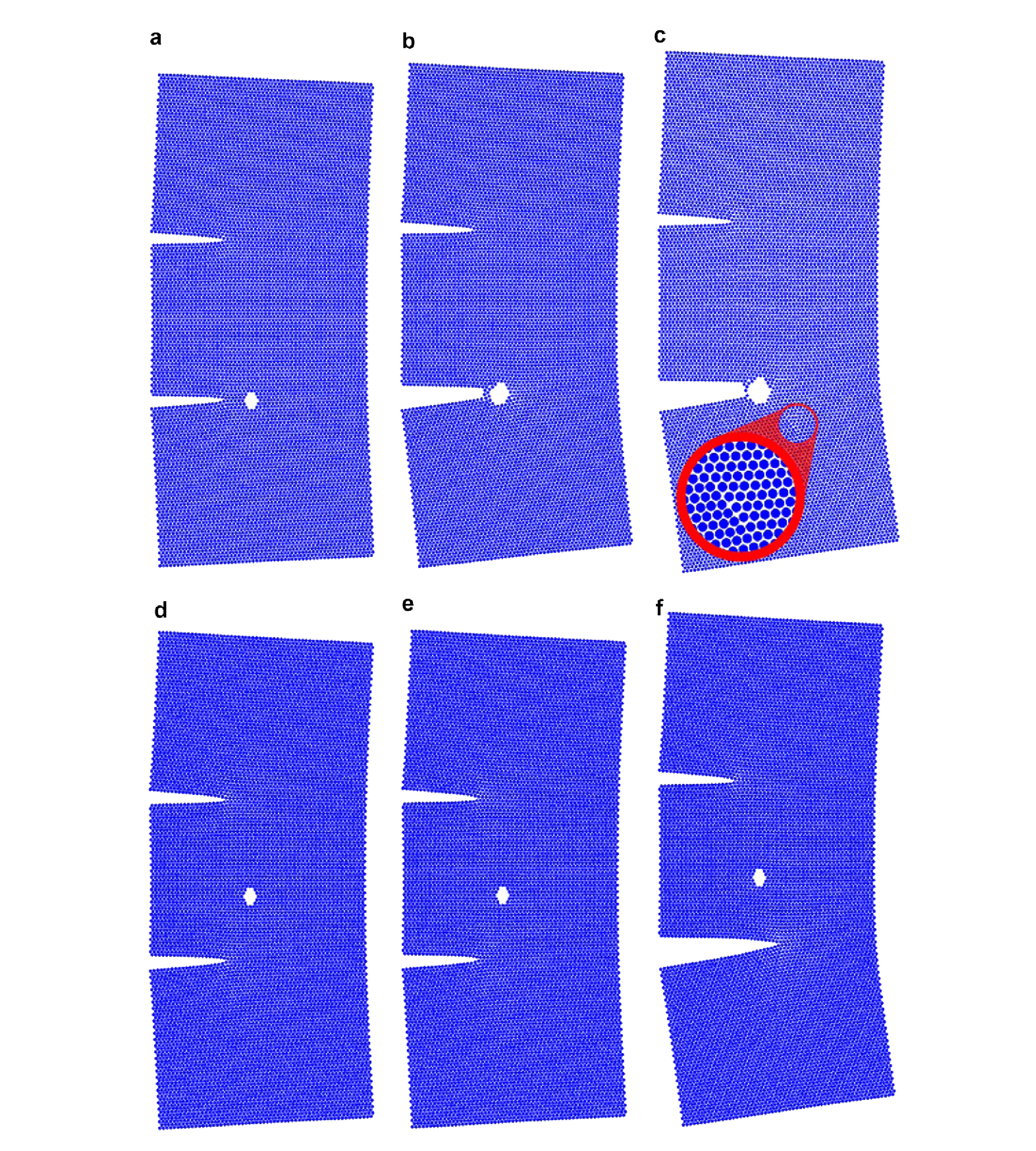Hossein M. Shodja

The competition and interaction of two edge cracks within the triangular lattice of an fcc material are addressed. We have also examined the effect of presence of a nanovoid in the vicinity of one of the crack-tips, on the competition of the cracks. An atomic scale finite element method (AFEM) [B. Liu, Y. Huang, H. Jiang, S. Qu, K.C. Hwang, The atomic-scale finite element method, Comput. Methods Appl. Mech. Eng. 193 (2004) 1849–1864], based on the Morse interatomic potential, is employed to explore the events in the (1 1 1) plane. Particular attention is given to the phenomenon of brittle-to-ductile transition (BDT) that occurs during crack propagation.

Computed values of shear stress along the slip plane for theindicated atoms as a function of the separation distance between the twocracks under a constant load of 123 pN/atom.

Different stages of crack growth in the presence of a nanovoid; (a–c) nanovoid located directly in front of the lower crack, (d–f) nanovoid locatedcloser to the lower crack-tip.
Interacting cracks and nanovoid, Brittle-to-ductile transition, SIF, Interatomic potential function, Atomistic finite element method, Dislocation emission